It looks like you're using an Ad Blocker.
Please white-list or disable AboveTopSecret.com in your ad-blocking tool.
Thank you.
Some features of ATS will be disabled while you continue to use an ad-blocker.
share:
I know the Vikings weren't an "ancient" civilization per se, so at a bit of a loss as where to post this.
Still IS THIS COOL OR WHAT??????
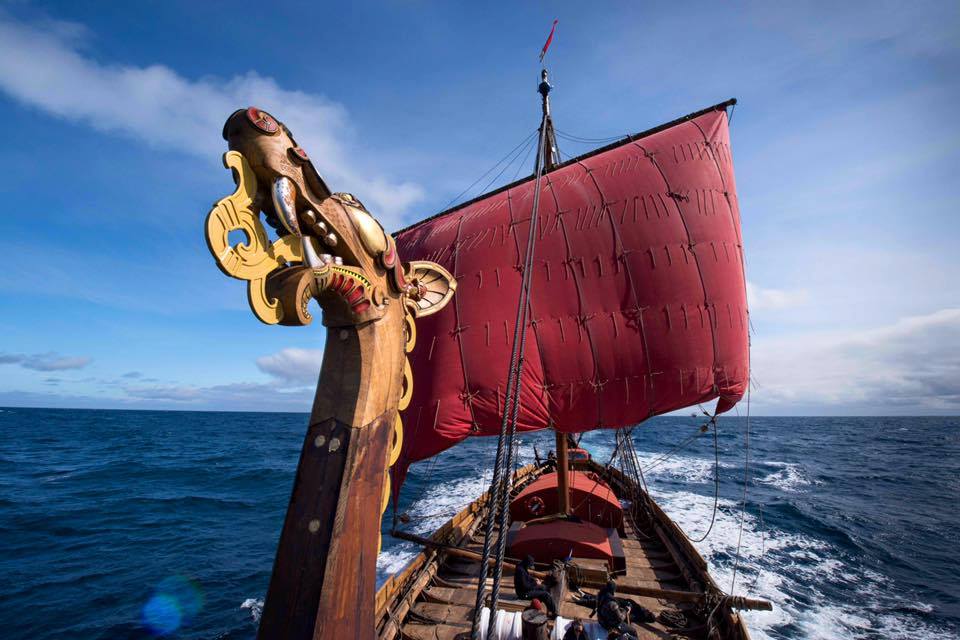
www.cbc.ca...
It seems there was a miscommunication about Pilot Fees in the Great Lakes so for awhile it looked as tho the Draken Harald Hårfagre was going to be stuck in Lake Erie on the Ohio side, but is now underway to Bay City Michigan hopefully arriving about 9pm tonight.
If anyone knows how to imbed video Please DO!
The sight of this sailing the Atlantic, and into Lanse'aux Meadows was impressive. More so that it's an all volunteer crew.
Links to Videos-
www.drakenexpeditionamerica.com...
Image taken off Greenland
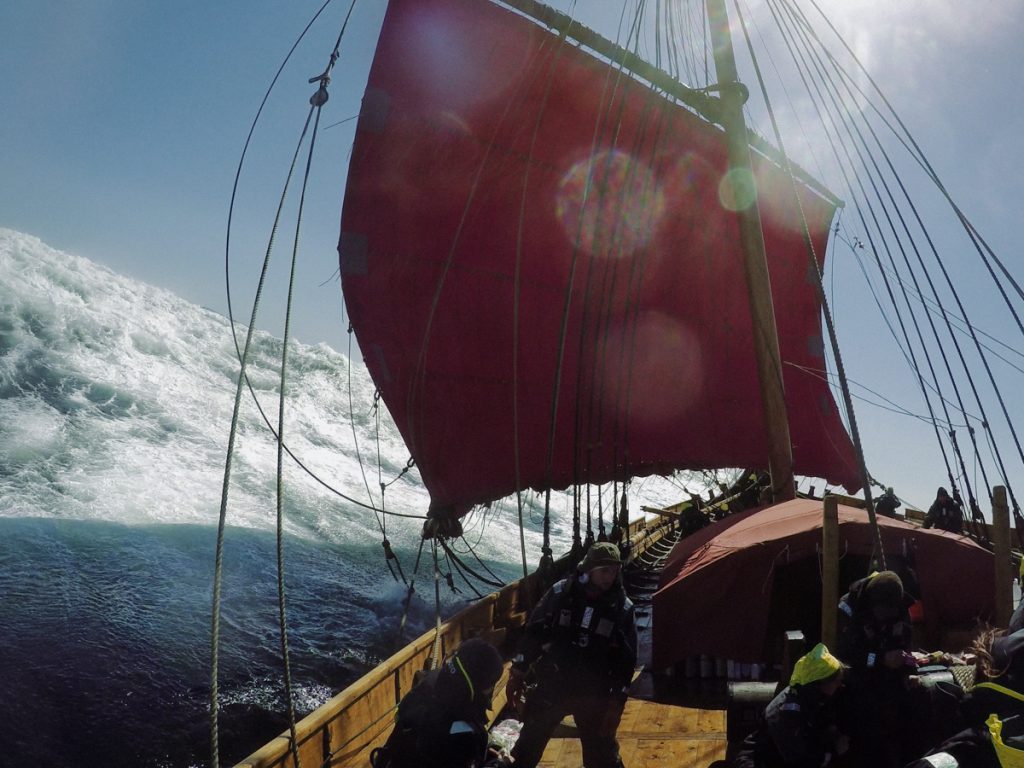
Crossing the Atlantic in their own words.
www.cbc.ca...
If this doesn't stir your imagination and fire you up on ATS nothing will. It's long been rumored the Vikings sailed inland and now we have proof it was more than possible. Of course back then they didn't have the locks to contend with also the water level on the western St.Lawrence was probably shallower in places.
This is an amazing feat of sailing and endurance for the crew living in tents on the deck. With todays ships touting all the modern conveniences for these young people to participate in this is awe inspiring.
Norwegian replica of Viking ship sails into $400K in unexpected expenses
www.cbc.ca...
Still IS THIS COOL OR WHAT??????

A 32-metre long oak ship built using ancient Norse methods has sailed across the Atlantic and up the St. Lawrence River to Brockville, Ont. to demonstrate that Viking explorers may have travelled farther into North America than previously thought.
The Draken Harald Hårfagre set sail from Haugesund, Norway on April 24 with a crew of 32 volunteer sailors working in four-hour shifts.
Because a Viking long ship has no "below deck," 16 sailors at a time sleep under a tent below the 260 square metre red sail when not setting rigging, cleaning, preparing food, or manning the 25 pairs of oars.
Crossing the Atlantic
The Draken Harald is called the world's largest Viking ship, complete with a carved dragon figurehead at the prow and elaborate ornamentation throughout. It crossed from Norway to Reykjavik, Iceland in late April, then to Qaqortoq, Greenland, reaching St. Anthony, N.L. in June.
www.cbc.ca...
It seems there was a miscommunication about Pilot Fees in the Great Lakes so for awhile it looked as tho the Draken Harald Hårfagre was going to be stuck in Lake Erie on the Ohio side, but is now underway to Bay City Michigan hopefully arriving about 9pm tonight.
If anyone knows how to imbed video Please DO!
The sight of this sailing the Atlantic, and into Lanse'aux Meadows was impressive. More so that it's an all volunteer crew.
Links to Videos-
www.drakenexpeditionamerica.com...
Image taken off Greenland

Crossing the Atlantic in their own words.
"You can't imagine the cold sometimes," Ahlander said of the Atlantic crossing. "It's so cold to be out when it's 2 degrees and a gale and 0 degrees in the water."
"It's very, very hard and challenging. Even if you try to imagine how it is, the reality is worse," he said.
When asked how they coped with the cold, Ahlander's answer was simple.
"We didn't cope, we were frozen."
World War II shipwreck explored for first time since 1942
On one of the first legs of the journey to Iceland, he considered leaving some of the crew there, but he said they became stronger as the voyage continued.
Jostein about his experience of #expeditionamerica2016 t.co...
— @drakenhh
Watch out for growlers
Icebergs are a constant worry for ships crossing the Atlantic at this time of year, but it was the smaller ice chunks, known as growlers that worried the crew of the Harald Hårfagre.
"It's pieces of ice floating very near to the surface, you can't see them on the radar," he said.
Colliding with the ice can damage the hull or the rudder and in the middle of the Atlantic, the crew is far away from any assistance.
"It was very stressful in the night, we had sharp lookouts."
Ahlander is a hardy sailor, but he still says this voyage tested him the most.
"I have sailed big sailing vessels to China and back, but this is tougher, because you cannot have any breaking waves coming over your side."
www.cbc.ca...
If this doesn't stir your imagination and fire you up on ATS nothing will. It's long been rumored the Vikings sailed inland and now we have proof it was more than possible. Of course back then they didn't have the locks to contend with also the water level on the western St.Lawrence was probably shallower in places.
This is an amazing feat of sailing and endurance for the crew living in tents on the deck. With todays ships touting all the modern conveniences for these young people to participate in this is awe inspiring.
Norwegian replica of Viking ship sails into $400K in unexpected expenses
The crew of a replica Viking ship that has sailed from Norway to Lake Erie says it might have to cancel the rest of its voyage because of an estimated $400,000 USD in unexpected expenses.
Crew members on board the Draken Harald Hårfagre told CBC News they recently found out they will have to pay a licensed pilot $400 USD per hour to board the vessel and navigate it through the international waters along the Canada-U.S. border, in compliance with the U.S. Coast Guard's pilotage regulations.
Norwegian replica of Viking ship arrives in Eastern Ontario
Viking replica ship stops in Quebec after crossing Atlantic
"We are devastated, of course we want to continue," said Sarah Blank, a crew member on board the vessel, which bills itself as the "world's largest" Viking ship built in modern times.
The Draken Harald Hårfagre left Norway on April 24 with a crew of 32 volunteer sailors, reaching St. Anthony, N.L., before sailing down the St. Lawrence River to reach Brockville, Ont. in late June. The ship is currently in Fairport Harbor, Ohio.
Blank told CBC News the crew was under the impression before the journey that the ship would not be subject to pilotage, since its less than 35 metres in length, which is the threshold for pilotage in Canadian waters.
But Robert Lemire, the head of the Great Lakes Pilotage Authority in Cornwall, Ont., said the rules changed once the ship entered American waters on the south side of Cornwall.
Trouble started in international waters
When it comes to pilotage regulations, the U.S. Coast Guard classifies the waters west of Cornwall, including the entire Great Lakes region — with the exception of the Welland Canal — as "international waters" because it "touches sides of both countries," Lemire said.
"As such, the Norwegian ship is required under American laws to avail themselves of a licensed pilot in all international and American waters of the Great Lakes," he said.
'We don't have the budget to continue.'
- Source
Pilotage laws were originally established to make sure foreign commercial ships safely navigate waterways — which can be narrow, and contain islands or shoals — "to protect public interest, public infrastructure and the crew on board," Lemire said.
But the crew argues it's not a commercial vessel.
www.cbc.ca...
More breaking news on The Draken
Their FB page has current updates on location and activities they are participating in on the Great Lakes. The ship while also participating in the Tall Ships Challenge is providing educational opportunities in every port.
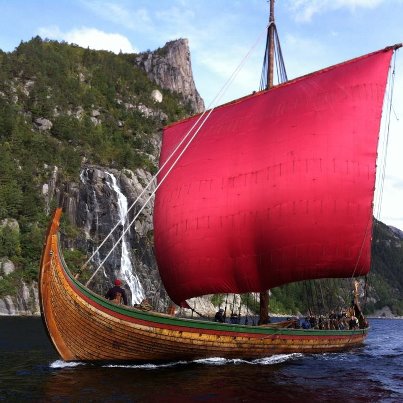
www.facebook.com...
Their FB page has current updates on location and activities they are participating in on the Great Lakes. The ship while also participating in the Tall Ships Challenge is providing educational opportunities in every port.
Draken Harald Hårfagre
1 hr ·
Sons of Norway started a fundraise to help us cover the pilot fees in the Great Lakes. We have choosen their initiative to be the official one, and we are so grateful and overwhelmed over all the people wanting to help us to be able to sail and visit the port of the Great Lakes! Thank you! Help us sail again!

www.facebook.com...
edit on 14-7-2016 by Caver78 because: (no reason given)
Wonderful! I love tall ships and any replicas; what a wonderful experience to be able to sail them! I can hear the ropes creaking from here.
At San Diego's Maritime Museum, they just completed a replica of the 1540s 'San Salvador'; it was first put into the water just weeks ago-
sdmaritime.org...
At San Diego's Maritime Museum, they just completed a replica of the 1540s 'San Salvador'; it was first put into the water just weeks ago-
sdmaritime.org...
originally posted by: SentientCentenarian
Wonderful! I love tall ships and any replicas; what a wonderful experience to be able to sail them! I can hear the ropes creaking from here.
At San Diego's Maritime Museum, they just completed a replica of the 1540s 'San Salvador'; it was first put into the water just weeks ago-
sdmaritime.org...

Just had to add the picture for ya!
Man are they Majestic!!
There was a second site found in NL of a possible Viking settlement much further south of Lanse'aux Meadows. I'm of the opinion more sites are out
there if we keep looking. It will be difficult due to development along the St.Lawrence Seaway but maybe some will turn up like they do in the UK when
construction takes place.
news.nationalgeographic.com...
Archaeologists have unearthed a stone hearth that was used for iron-working, hundreds of miles away from the only other known Viking site in North America.
PHOTOGRAPH BY ROBERT CLARK, NATIONAL GEOGRAPHIC
By Mark Strauss
PUBLISHED MARCH 31, 2016
POINT ROSEE, CANADAIt’s a two-mile trudge through forested, swampy ground to reach Point Rosee, a narrow, windswept peninsula stretching from southern Newfoundland into the Gulf of St. Lawrence. Last June, a team of archaeologists was drawn to this remote part of Canada by a modern-day treasure map: satellite imagery revealing ground features that could be evidence of past human activity.
The treasure they discovered here—a stone hearth used for working iron—could rewrite the early history of North America and aid the search for lost Viking settlements described in Norse sagas centuries ago.
To date, the only confirmed Viking site in the New World is L’Anse aux Meadows, a thousand-year-old way station discovered in 1960 on the northern tip of Newfoundland. It was a temporary settlement, abandoned after just a few years, and archaeologists have spent the past half-century searching for elusive signs of other Norse expeditions.
“The sagas suggest a short period of activity and a very brief and failed colonization attempt,” says Douglas Bolender, an archaeologist specializing in Norse settlements. “L’Anse aux Meadows fits well with that story but is only one site. Point Rosee could reinforce that story or completely change it if the dating is different from L’Anse aux Meadows. We could end up with a much longer period of Norse activity in the New World.”
news.nationalgeographic.com...
Older threads on Vikings in North America
www.abovetopsecret.com...
www.abovetopsecret.com...
www.abovetopsecret.com...
www.abovetopsecret.com...
www.abovetopsecret.com...
www.abovetopsecret.com...
That is so cool. We are going to see it Sunday up in Bay City.
Fantastic!! Oooo that fires one up and my imagination runs away with me! Would love to be able to take a short ride on it. It's lovely. Even to see
it would be awesome! I hope the funds can be rounded up for them to continue. Is there a way to donate that isn't through Facebook? I will check
around and post back if i find anything
eta: they do have a page for it but I don't think we are allowed to link it. (If anyone is interested just google Sons of Norway and the draken expedition )
eta: they do have a page for it but I don't think we are allowed to link it. (If anyone is interested just google Sons of Norway and the draken expedition )
edit on 15-7-2016 by Starcrossd because: added info
a reply to: Starcrossd
I still can't imagine this ship was classed as commercial when it's so obviously a teaching tool. It'd be like saying the Brigand Niagara out of Port Erie is a commercial vessel.
Plus I had no idea pilots get $400.00 an hour. I picked the wrong career!!!
Don't think we can link to the Son's Of Norway, but it's on the Draken's website.
I still can't imagine this ship was classed as commercial when it's so obviously a teaching tool. It'd be like saying the Brigand Niagara out of Port Erie is a commercial vessel.
Plus I had no idea pilots get $400.00 an hour. I picked the wrong career!!!
Don't think we can link to the Son's Of Norway, but it's on the Draken's website.
a reply to: gortex
The crew is amazingly tough to bob around like that sleeping on deck in a tent from early April across the Atlantic right into frying here this summer.
It really puts into perspective how difficult the original Vikings had it.
On the other hand it demonstrates how adaptable their ships were to all conditions. It's very possible they came much further inland than we have given them credit for. IIRC there were theories of them coming into the Great Lakes and trading for copper?
The crew is amazingly tough to bob around like that sleeping on deck in a tent from early April across the Atlantic right into frying here this summer.
It really puts into perspective how difficult the original Vikings had it.
On the other hand it demonstrates how adaptable their ships were to all conditions. It's very possible they came much further inland than we have given them credit for. IIRC there were theories of them coming into the Great Lakes and trading for copper?
a reply to: Caver78
Thats pretty interesting. I would guess in that time period there would only have been Indians living in Northern Mi. You think they would have traded instead of just attacking and taking copper? What we hear of the Vikings and all.
IIRC there were theories of them coming into the Great Lakes and trading for copper?
Thats pretty interesting. I would guess in that time period there would only have been Indians living in Northern Mi. You think they would have traded instead of just attacking and taking copper? What we hear of the Vikings and all.
Got my camera battery charged up and ready to go. So hopefully lots of good pics
Can we expect some Pictures from your visit ??
edit on 17-7-2016 by tinner07 because: (no reason
given)
Great thread op.
What a brilliant adventure that would be!
I feel a bit jealous of the 32 modern Vikings who crewed that long ship.
What a brilliant adventure that would be!
I feel a bit jealous of the 32 modern Vikings who crewed that long ship.
originally posted by: Caver78 IIRC there were theories of them coming into the Great Lakes and trading for copper?
Unfortunately, that story was a fringe idea to explain a question that didn't need asking.
Here you can find the truth
copperculture.homestead.com...
Fun fact: The name of the ship pretty much mean "The dragon Harald with lots of hair".
Not sure if its the hair, beard or or something else they are refering too.
Not sure if its the hair, beard or or something else they are refering too.
edit on 17-7-2016 by merka because: (no reason given)
originally posted by: merka
Fun fact: The name of the ship pretty much mean "The dragon Harald with lots of hair".
Not sure if its the hair, beard or or something else they are refering too.
The Vikings believed that a long beard and hair symbolized strength. So perhaps a better translation would be
"The strong Dragon Harold
The Tall ships were really cool to see. To master the rigging is pretty impressive. One thing that struck me odd was the Viking Dragon boat all bolted
together. Maybe they are a type of rivet. Unfortunately the crowds were very large,although I'm sure it drew in a ton of money that I hope mainly goes
to the ships funding.
We paid the extra money to go onboard but the lines and wait times were way to long.
But I managed a few half way decent pictures
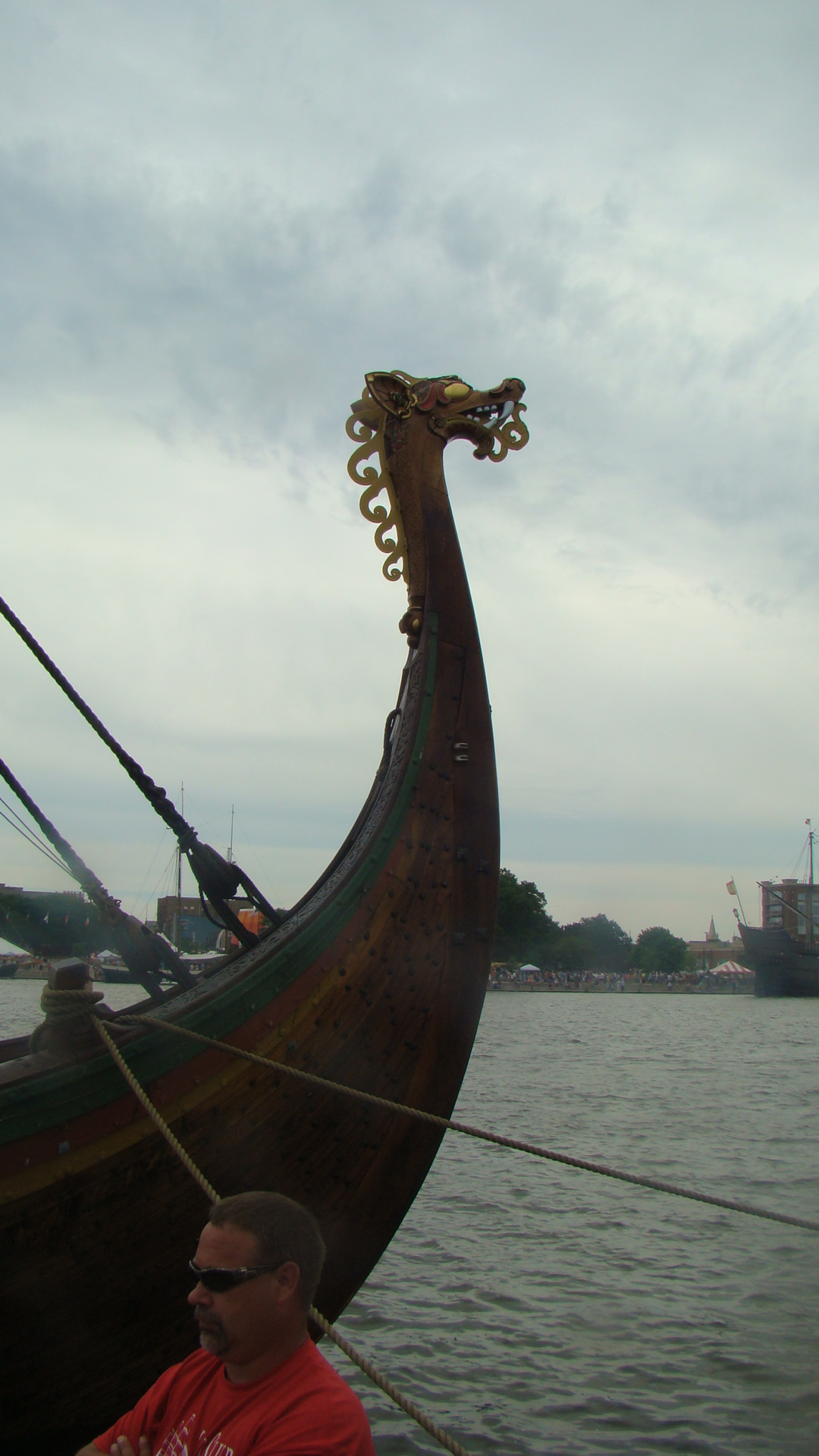
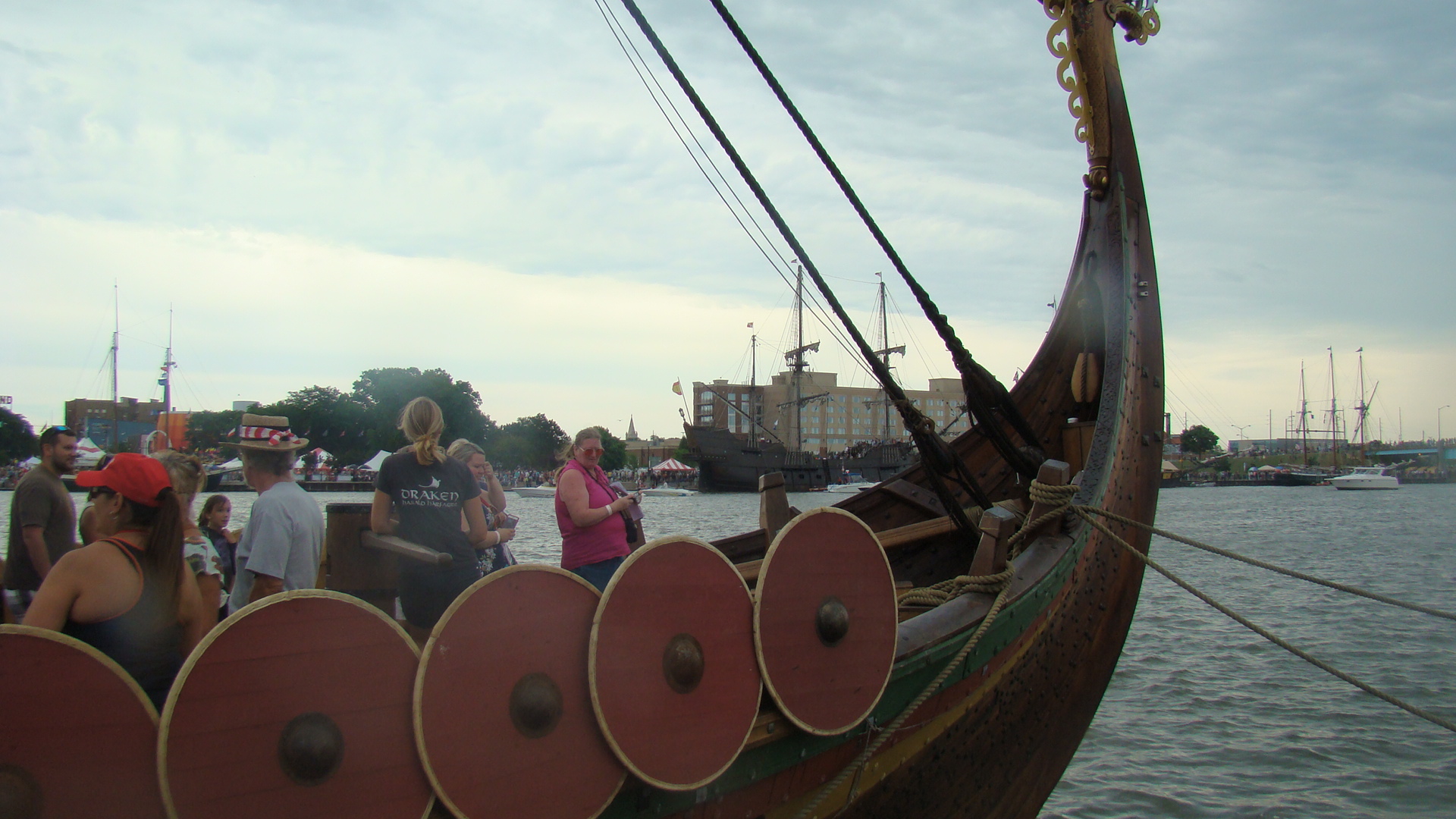
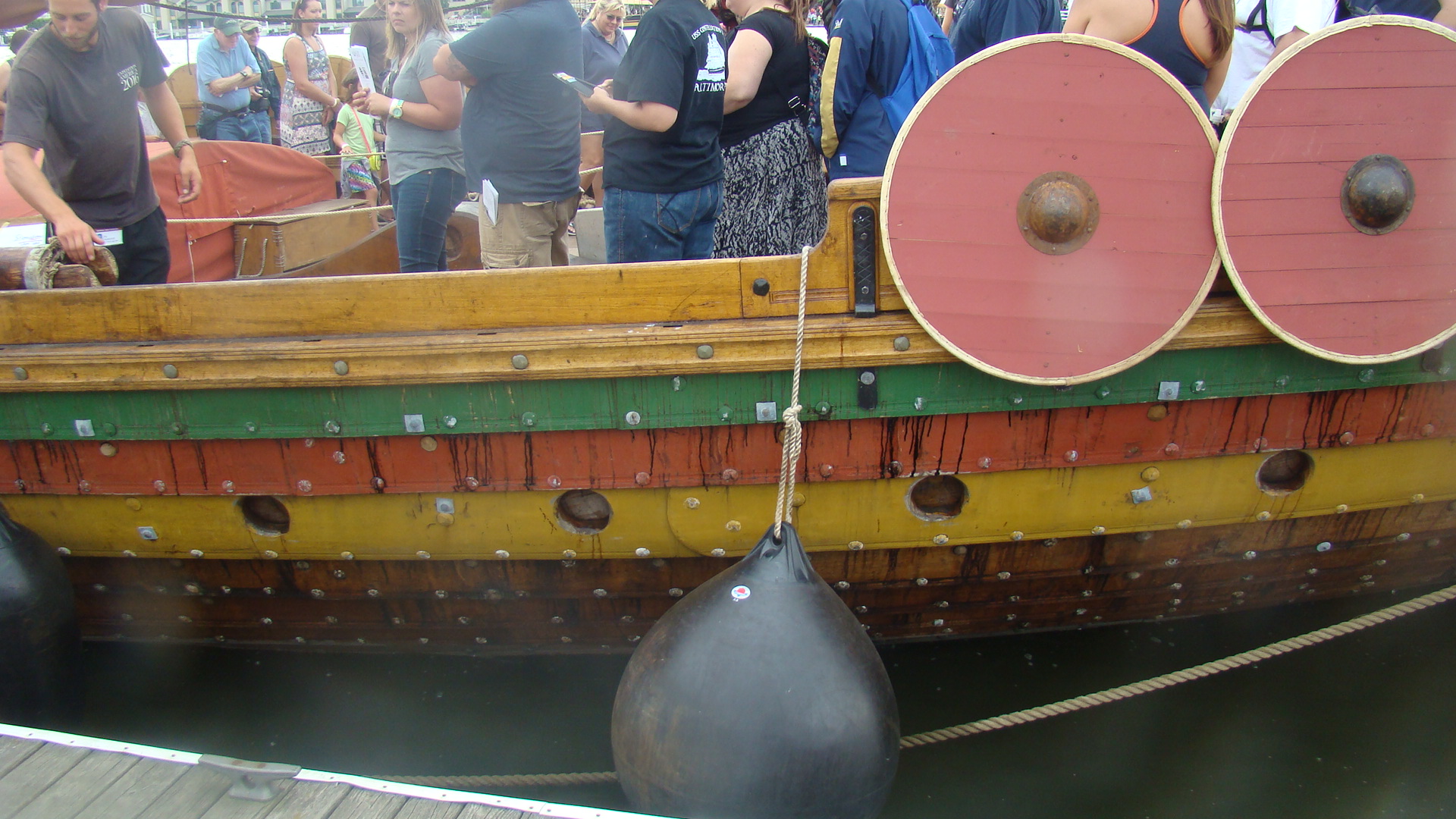
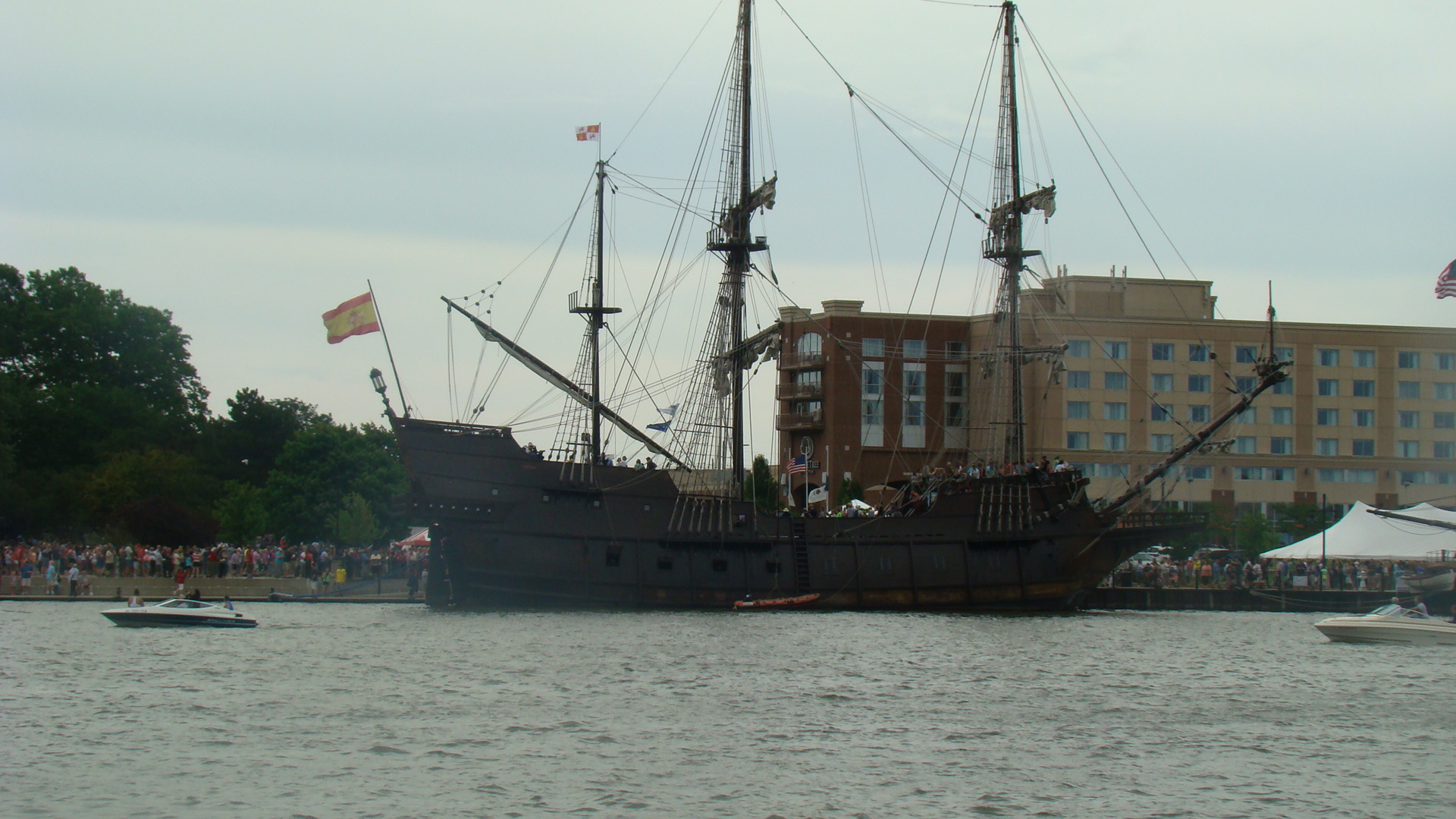
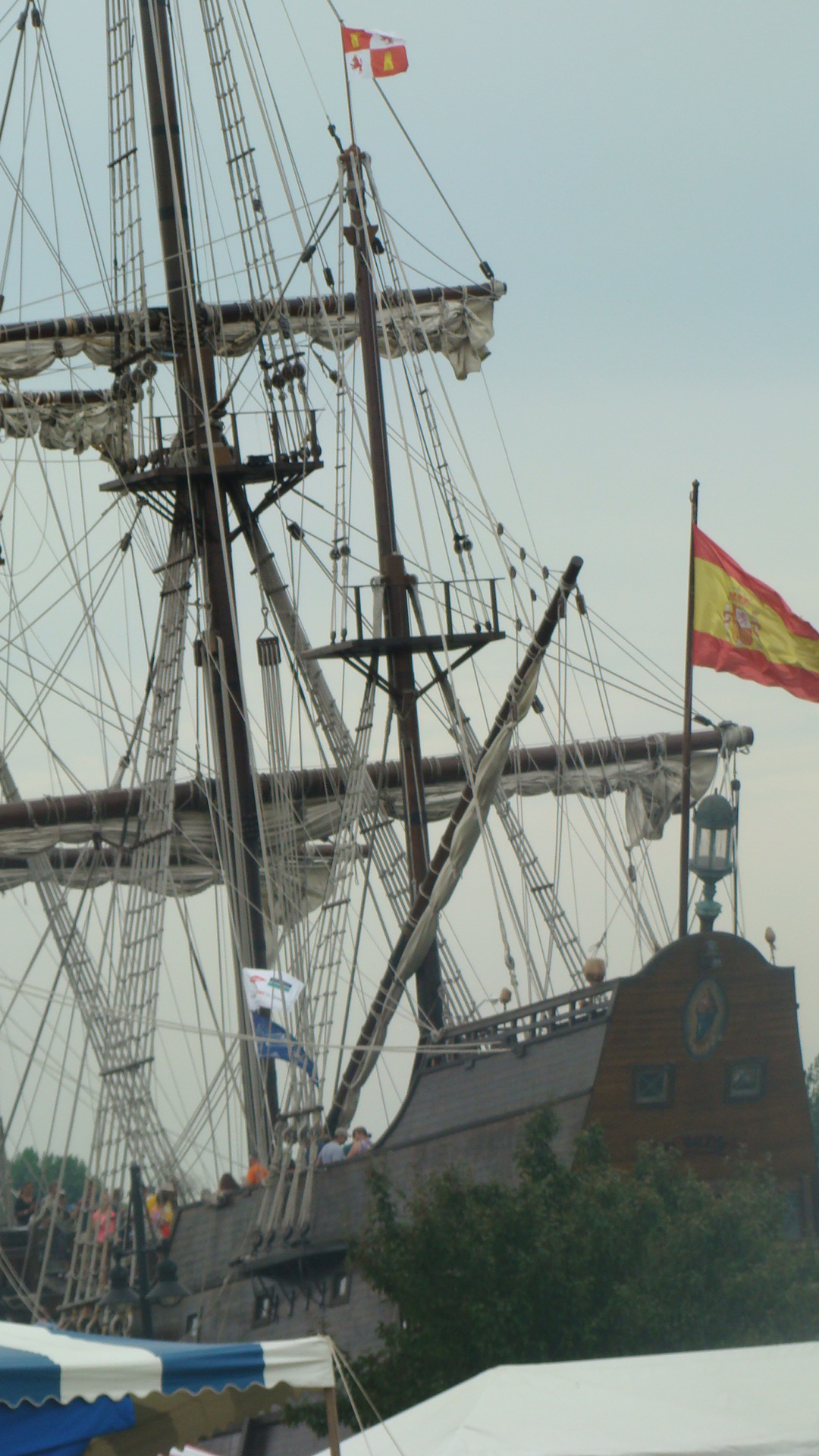
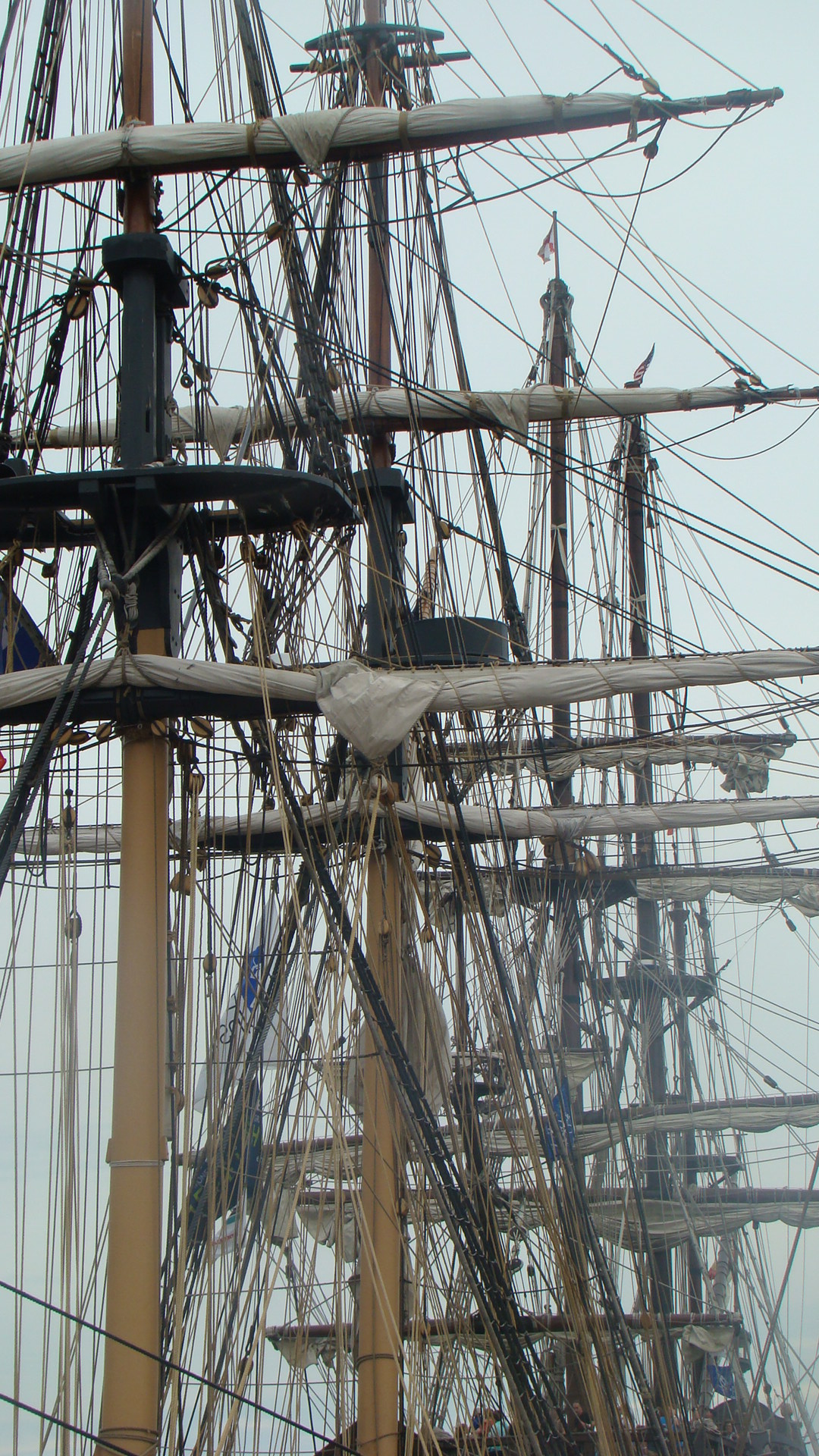
We paid the extra money to go onboard but the lines and wait times were way to long.
But I managed a few half way decent pictures






new topics
-
Dr Cambell talking about using worm meds for cancer
Medical Issues & Conspiracies: 2 hours ago -
A Question for You on the Left
Political Ideology: 4 hours ago -
Words of Wisdom from the Dear Leader - Transcribed for the World
Regional Politics: 4 hours ago -
Looks like Biden kicked off WWIII and Putin threatening nukes to retaliate
World War Three: 5 hours ago -
Watch SpaceX Starship Test Flight 6 Live - Launch Starts 4pm CST , 2200 GMT.
Space Exploration: 9 hours ago -
Watch Dramatic Moment Ukrainian Nursery Teacher Takes Out Russian Missile With Rocket Launcher
Mainstream News: 10 hours ago
top topics
-
A Question for You on the Left
Political Ideology: 4 hours ago, 13 flags -
Looks like Biden kicked off WWIII and Putin threatening nukes to retaliate
World War Three: 5 hours ago, 9 flags -
Dr Cambell talking about using worm meds for cancer
Medical Issues & Conspiracies: 2 hours ago, 9 flags -
He Had and It Has
Short Stories: 14 hours ago, 5 flags -
Words of Wisdom from the Dear Leader - Transcribed for the World
Regional Politics: 4 hours ago, 4 flags -
Morning’s Reverie
Short Stories: 16 hours ago, 3 flags -
Watch SpaceX Starship Test Flight 6 Live - Launch Starts 4pm CST , 2200 GMT.
Space Exploration: 9 hours ago, 3 flags -
Watch Dramatic Moment Ukrainian Nursery Teacher Takes Out Russian Missile With Rocket Launcher
Mainstream News: 10 hours ago, 2 flags
active topics
-
A Question for You on the Left
Political Ideology • 25 • : KrustyKrab -
The Reactionary Conspiracy 13. The plot’s theology.
General Conspiracies • 304 • : Oldcarpy2 -
DefCon Teetering on Escalation
World War Three • 35 • : marg6043 -
Watch Dramatic Moment Ukrainian Nursery Teacher Takes Out Russian Missile With Rocket Launcher
Mainstream News • 29 • : Lazy88 -
Incoming TRUMP Admin will Declare a National Emergency to Mass Deport People Here Illegally.
Social Issues and Civil Unrest • 107 • : peter_kandra -
Democrat county officials openly declare intention to commit ballot fraud in PA
2024 Elections • 16 • : YourFaceAgain -
The Final Experiment is Scheduled for December 2024. Will it Finally Answer the Question?
Science & Technology • 23 • : Arbitrageur -
Trump’s N.Y. hush money sentencing delayed until after Nov. election
2024 Elections • 21 • : xuenchen -
He Had and It Has
Short Stories • 6 • : Moon68 -
-@TH3WH17ERABB17- -Q- ---TIME TO SHOW THE WORLD--- -Part- --44--
Dissecting Disinformation • 3309 • : Thoughtful3
